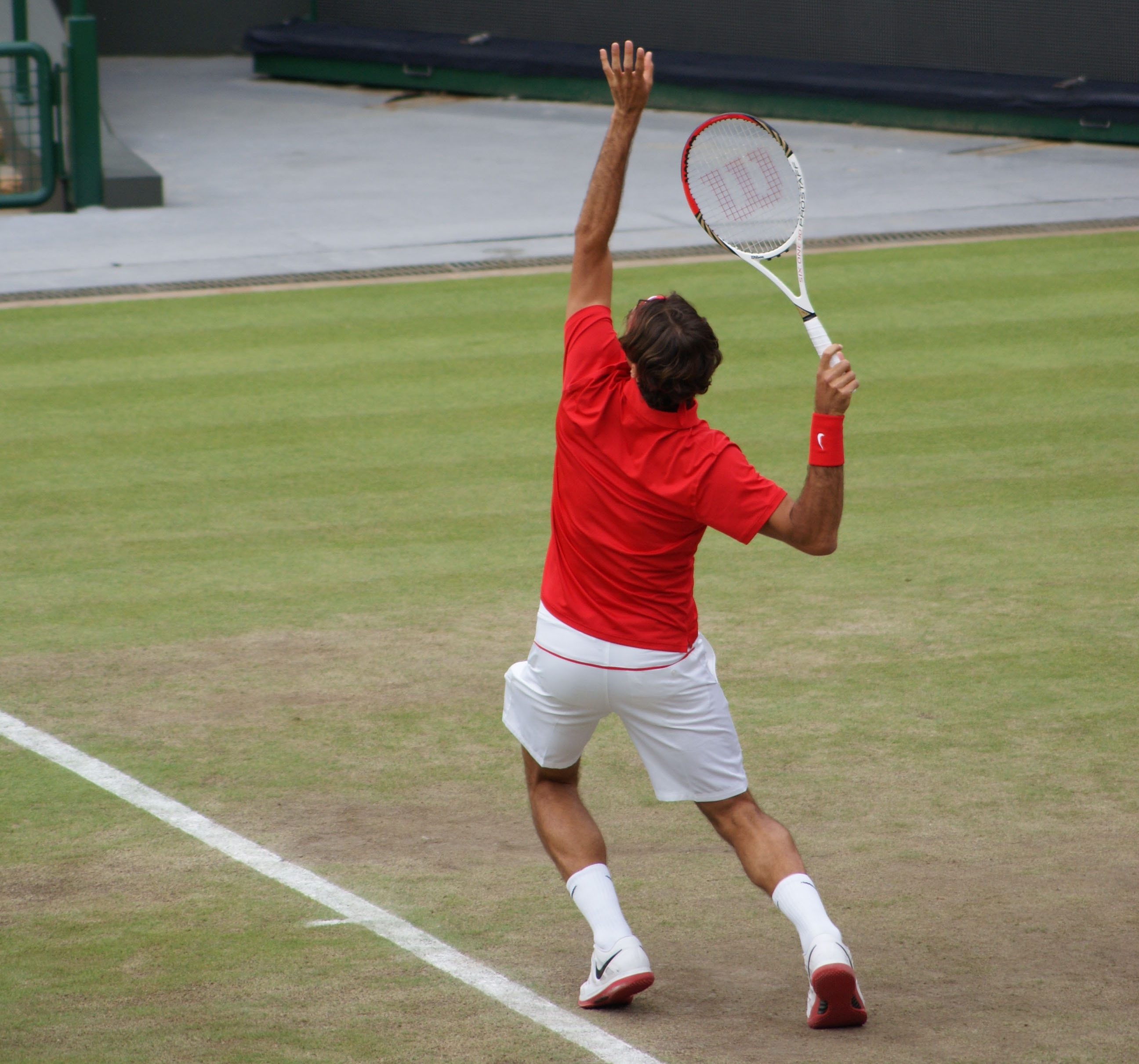How Big Is A Tennis Court?
TV cameras show tennis courts at different angles. This makes fans think that tennis courts are of different sizes. That is not true. All tennis courts are of the same size.
Some clubs have smaller courts for recreational use. But all courts used in tennis tournaments are the same size. What are the exact dimensions of a tennis court?
Tennis Court Dimensions
- Overall Length: 78 ft / 23.77 m
- Overall Width: 27 ft / 8.23 m (Singles), 36 ft / 10.97 m (Doubles)
Areas of the Tennis Court
- Length of Service Box: 21 ft / 6.4 m
- Width of Service Box: 13.5 ft / 4.1m
- No Man’s Land (between service box and the baseline): 18 ft / 5.5 m x 27 ft / 8.2 m (486 sq ft / 45.2 sq m)
- Doubles Alley: 39 ft / 11.9 m x 4.5 ft / 1.4 m (175.5 sq ft / 16.3 sq m)
- Net: 3ft / 0.9m high in the centre, 3.5ft / 1.1 m high at the net posts
- Center Line: 4″ / 0.1 m long

Tennis court is a rectangle, 78 feet (23.77 m) long and, for singles matches, 27 feet (8.23 m) wide. For doubles matches, the court is 36 feet (10.97 m) wide. The length of the court remains the same for single and doubles.
The lines at the ends of the court are called baselines and the lines at the sides of the court are called sidelines.
Baseline on either side of the court is divided in half by a center mark, 4 inches (10 cm) in length. It is drawn inside the court and parallel with the singles sidelines. The center service line and center mark on the baseline is 2 inches (5 cm) wide.
Whether it’s indoors or outdoors, the dimensions of a tennis court remain the same.
Primary Areas of A Tennis Court
The Net
The court is divided across the middle by a net suspended by a cord or metal cable which passes over or is attached to two net posts at a height of 3 ½ feet (1.07 m). The net when fully extended fills the space between the two net posts and it must be of sufficiently small mesh to ensure that a ball cannot pass through it. The height of the net is 3 feet (0.914 m) at the center, where it is held down tightly by a strap. A band covers the cord and the top of the net. The strap and band must be completely white.
Baseline
The baseline is the line from where the server starts the point. It is 39 feet away from the net.
Service area
This is a 21 x 27 (sq. feet) area divided into two – the deuce court and the advantage court. The deuce court is on the right side of the court for a player and the ad court is the side on the left. When serving, this is the area within which the ball must land for a valid serve.
No man’s land
It is the 486 sq feet land (18 x 27) between the service area and baseline. The ideal position for a tennis player is either at the net or at the baseline. In the no man’s land, the player is most likely out of position and poorly positioned for play.
Doubles Alley
The area between the doubles sideline and singles sideline is called the doubles alley. If the court is going to be used only for singles, the doubles ally may not be marked or painted on the court.
Singles sideline
27 feet out of the total 36 feet of court width is used for singles. These sidelines are called singles sidelines. The rest of the area is used only if playing doubles.
Back Stop Distance
For tournament play (international competitions), the recommended minimum distance between the baselines and the backstops is 21 feet (6.40 m). The minimum recommended distance between the sidelines and the sides stop is 12 feet (3.66 m).
For recreational and club play, the recommended minimum distance between the baselines and the backstops is 18 feet (5.48 m) and between the recommended distance between the sidelines and the side stops is 10 feet (3.05 m).
Tennis Surfaces
Tennis has a long history and is now played on a variety of surfaces: clay, grass, hard courts, and carpet. Each type of material provides its advantages and offers unique challenges to players.
Clay
Clay courts are made of compressed shale, stone, or brick. Though there are tournaments on clay during most months of the year, premier tournaments are played on clay courts typically before the French Open and at the French Open itself. These courts are usually slow and give balls a higher bounce. They tend to favor baseline players. These courts are most popular in Europe and Latin America.
Grass
Most people will know Wimbledon as the only grand slam that is played on grass these days. Tennis courts with grass surfaces are not as common today due to the increasing cost of maintenance. The grass is a surface where players with stronger serve-and-volley skills traditionally performed better but baseliners have ruled in recent years.
Hard Courts
These are the most commonly used courts in North America. The US Open and the Australian Open are played on hard courts. These courts are low maintenance. The surfaces are generally painted green or blue.
Carpet
Carpets courts are indoor courts. Carpets can be made from any of several materials, from artificial turf to hard rubber. Carpet courts are faster than clay and hard courts. Tournaments are played on carpet towards the end of the calendar year when it’s too cold to play outdoors.
